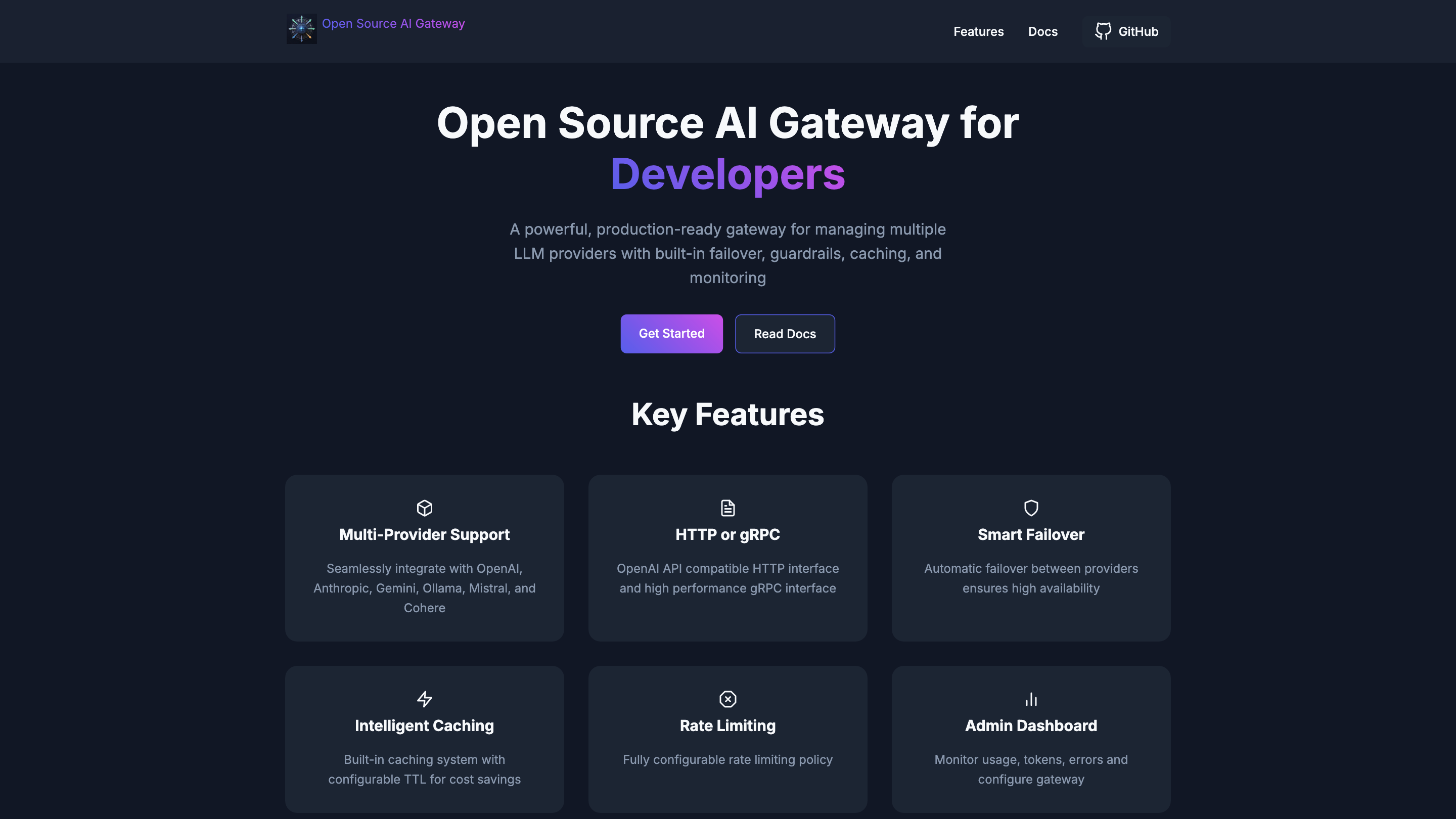Open Source AI Gateway
Open siteCoding & Development
Introduction
Configurable API gateway for multiple LLM providers
Open Source AI Gateway Product Information
Open Source AI Gateway is a production-ready gateway that manages multiple LLM providers with built-in failover, guardrails, caching, and monitoring. It supports multi-provider integration (OpenAI, Anthropic, Gemini, Ollama, Mistral, Cohere) and exposes HTTP or gRPC interfaces that are compatible with the OpenAI API.
Key Features
- Multi-Provider Support: Seamlessly integrate with OpenAI, Anthropic, Gemini, Ollama, Mistral, and Cohere for flexible provider choice and redundancy
- HTTP or gRPC Interfaces: OpenAI API-compatible HTTP interface and high-performance gRPC interface
- Smart Failover: Automatic failover between providers to ensure high availability
- Intelligent Caching: Built-in caching with configurable TTL for cost savings and faster responses
- Rate Limiting: Fully configurable rate limiting policies to protect backends
- Admin Dashboard: Monitor usage, tokens, errors and configure gateway
- Content Guardrails: Configurable content filtering and safety measures
- Enterprise Logging: Integrations with Splunk, Datadog, and Elasticsearch for centralized observability
- System Prompt Injection: Intercept and inject system prompts for all outgoing requests
Getting Started
- Configure
- Create a Config.toml file with your API configuration
- Example snippet: [openAIConfig] apiKey = "Your_API_Key" model = "gpt-4" endpoint = "https://api.openai.com"
- Run
- Start the container with your configuration mounted:
docker run -p 8080:8080 -p 8081:8081 -p 8082:8082
-v $(pwd)/Config.toml:/home/ballerina/Config.toml
chintana/ai-gateway:v1.2.0
- Use
- Example request:
curl -X POST http://localhost:8080/v1/chat/completions
-H "Content-Type: application/json"
-H "x-llm-provider: openai"
-d '{"messages": [{"role": "user","content": "When will we have AGI? In 10 words"}]}'
How It Works
- Create a gateway configuration to connect to multiple LLM providers.
- The gateway routes requests to the configured provider(s) via HTTP or gRPC.
- Built-in failover automatically switches to a healthy provider if one fails.
- The caching layer stores frequent responses to reduce costs and latency.
- Admin dashboard provides visibility into tokens, usage, and error metrics.
- System prompts can be injected or modified for all outgoing requests.
- Guardrails and content filtering help enforce safety and policy compliance.
- Enterprise logging integrations enable centralized monitoring and observability.
Safety and Compliance
- Use responsible configurations for rate limits, guardrails, and monitoring to prevent misuse and ensure reliability.
Core Components
- Gateway runtime with multi-provider orchestration
- Caching layer for response optimization
- Guardrails and content filtering module
- Admin dashboard and observability integrations
- System prompt injection mechanism
